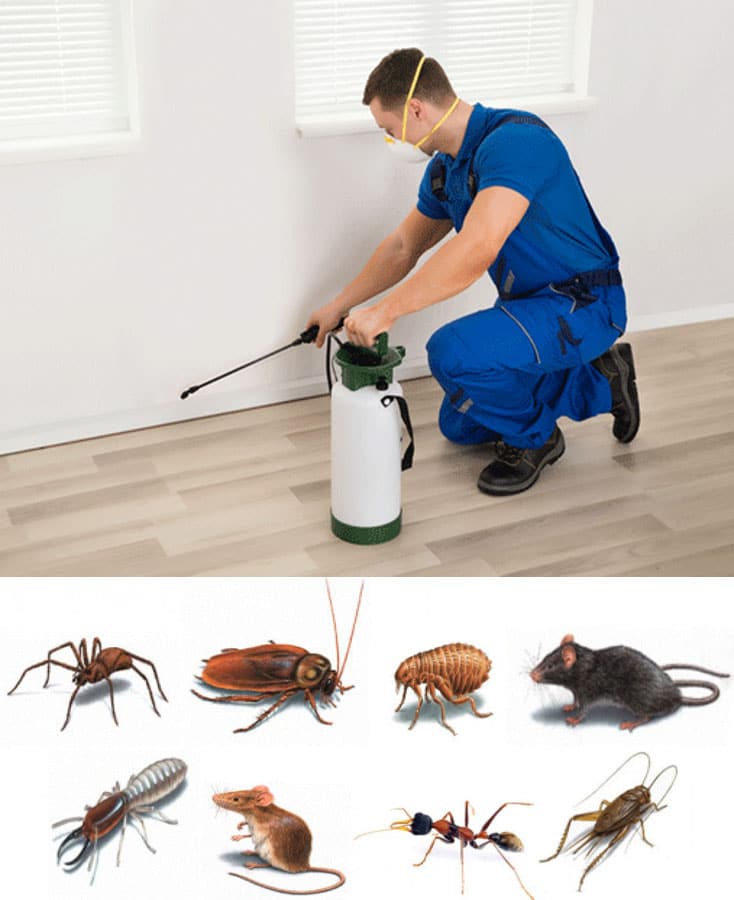Trustworthy A1 Bed Bug Exterminator Charlotte - Do Away With Bed Bugs Fast
Trustworthy A1 Bed Bug Exterminator Charlotte - Do Away With Bed Bugs Fast
Blog Article
Bed Pest Treatment Malfunction: Contrasting Chemical Vs. Non-Chemical Solutions
In the world of parasite control, especially when dealing with the persistent problem of bed pests, the choice in between chemical and non-chemical treatment options can be a crucial one. Both methods provide unique benefits and downsides, affecting elements such as efficiency, security considerations, and general price. By examining the nuanced details of each approach, a more clear understanding of which path to go after in dealing with a bed insect infestation can be achieved.
Efficiency of Chemical Treatments
Chemical treatments for bed pest invasions have actually been widely acknowledged for their fast and potent efficiency in getting rid of these bugs. When considering the performance of chemical treatments, it is essential to understand that they can provide a fast and detailed remedy to a bed bug trouble.
Additionally, chemical therapies have the advantage of providing residual impacts, indicating that they can remain to eliminate bed insects also after the initial application. This residual action is especially valuable in combating any kind of prospective re-infestations. In addition, the quick action of chemical therapies can bring relief to people encountering serious bed bug problems, permitting them to restore control of their space quickly.
Safety Interest In Chemical Solutions
One essential aspect that needs mindful consideration when using chemical services for bed insect therapy is guaranteeing the security of passengers and the setting. Direct exposure to specific chemicals used in bed pest therapies can lead to respiratory system problems, skin irritation, or various other adverse responses, particularly in people with pre-existing problems or sensitivities.
In addition, the environmental impact of chemical services is an additional significant consideration. Some chemicals used in bed pest therapies might be dangerous to beneficial insects, wild animals, and ecosystems if they leach right into the dirt or water supply. It is vital to use chemical treatments deliberately, following safety guidelines, and considering much less toxic choices to reduce these threats and guarantee the safe and effective management of bed bug infestations.
Benefits of Non-Chemical Strategies
Taking into consideration the possible safety and security problems and environmental impact connected with chemical services for bed insect treatment, checking out non-chemical approaches presents an appealing alternative with numerous distinctive benefits. Non-chemical methods use a more secure option for families, particularly those with people, pet dogs, or youngsters conscious extreme chemicals. These approaches eliminate the dangers of exposure to hazardous materials, minimizing the potential for negative health and wellness results. Furthermore, non-chemical treatments are environmentally friendly, as they do not add to air or water air pollution, making them a lasting choice for bug control.
Furthermore, non-chemical solutions can be effective in targeting bed bugs, consisting of hard-to-reach locations where chemical therapies might not penetrate. Approaches such as warmth therapy, vacuuming, steam cleaning, and mattress coverings supply detailed obliteration without the use of dangerous chemicals. In addition, non-chemical approaches can be much less disruptive, calling for very little prep work and permitting for quicker reentry right into dealt with locations. Overall, selecting non-chemical bed insect over at this website therapy techniques not just prioritizes security and environmental management yet also ensures reliable and comprehensive pest control.
Limitations of Non-Chemical Treatments

Additionally, non-chemical treatments typically require multiple applications to accomplish successful elimination. This can be lengthy and might not constantly guarantee complete elimination of all bed pests and their eggs, especially in surprise or hard-to-reach locations.
Additionally, the success of non-chemical therapies heavily depends on proper implementation and thoroughness, which can be challenging for people without professional competence. Poor application of non-chemical methods may result in incomplete elimination, leading to consistent problems and the requirement for additional therapies.
Consequently, while non-chemical treatments have their benefits, it is vital to acknowledge these constraints and consider them when figuring out the most effective method for handling bed bug invasions.
Cost Contrast: Chemical Vs. Non-Chemical Options
Offered the limitations connected with non-chemical treatments, a necessary aspect to review in the context of bed pest management is the price contrast in between chemical and non-chemical alternatives. Chemical therapies typically entail the application of insecticides by experts, which can range from $250 to $900 per area, depending upon the seriousness of the infestation and the dimension of the location to be treated. In contrast, non-chemical therapies like heat treatment or heavy steam can be much more pricey, with costs ranging from $1,000 to $6,000 for an entire home. While the initial cost of chemical treatments may seem lower, numerous therapies might be needed to completely eliminate the problem, possibly raising the total cost. On the various other hand, non-chemical choices browse around here may provide a much more sustainable and environmentally friendly solution, although they can be cost-prohibitive for some people. Inevitably, when considering the cost of bed bug therapy choices, it is very important to weigh the in advance costs against the efficiency and long-term sustainability of the picked method.
Final Thought

Considering the potential safety and security issues and ecological impact associated with chemical services for bed pest therapy, exploring non-chemical strategies provides an encouraging choice with a number of distinctive advantages.Offered the constraints associated with non-chemical treatments, a vital element to evaluate in the context of bed pest management is the cost contrast between chemical and non-chemical alternatives. In contrast, non-chemical treatments like warmth treatment or steam can be extra expensive, with prices varying from $1,000 to $6,000 for an entire home. While the initial cost of chemical therapies might appear lower, multiple therapies may be called for to completely remove the infestation, possibly enhancing the overall price.In conclusion, when contrasting chemical and non-chemical bed bug therapy alternatives, it is essential to think about performance, safety and security, benefits, restrictions, and expense.
Report this page